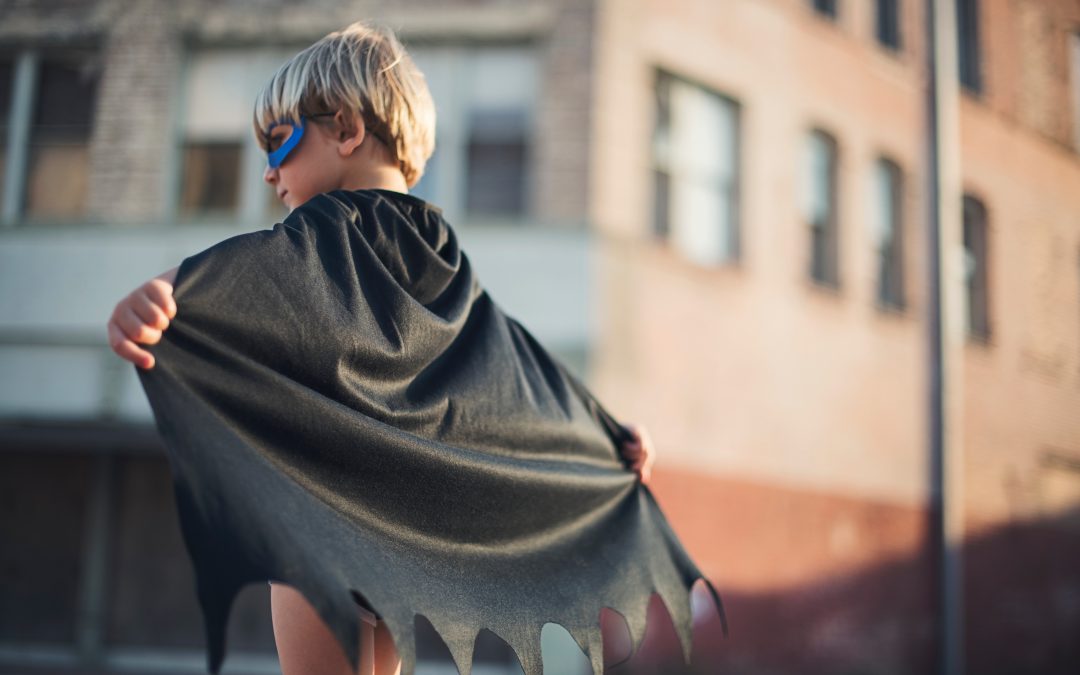It is rare that I don’t finish a book. I’m a voracious reader and will almost always stick with a book to its conclusion.
One of the few books I did not finish was The Stars in Our Eyes. Several pages in I could not relate to the story.
Nothing against the author, Julie Klam. I’m just not dazzled by celebrity. Her intended audience was clearly people who are.
My fascination with celebrity died in fourth grade.
A babysitter who was herself smitten with Donny Osmond bought me a Donny Osmond fan club membership for my seventh birthday. I joined the legions of his teeny bopper fans and professed my love. We had the same favorite color (purple)!
Two years later disaster struck. Donny got married. Not. To. Me. I was indignant. How dare he?!
After 10 minutes of brooding, I vowed never to pine after a celebrity again.
 On the other hand, I adore Peter Ostrum’s character Charlie Bucket in the 1971 movie Willy Wonka and the Chocolate Factory and have watched the movie several times.
On the other hand, I adore Peter Ostrum’s character Charlie Bucket in the 1971 movie Willy Wonka and the Chocolate Factory and have watched the movie several times.
It’s not Charlie’s looks that appeal (sorry Peter) but how much I relate to him. His hunger and desire to help his poor family tug at my heartstrings. His honesty, fondness for chocolate, and love for his family resonate.
There is also the satisfaction of seeing spoiled children’s misbehavior eliminate them from contention for the Willy Wonka factory. Who doesn’t love to see a bully get comeuppance?
All of these emotions make it easy for me to relate to Charlie, to remember the story and to enjoy it repeatedly.
Stories Build Emotional Connections to Your Brand
Ideally the relationship I have with Willy Wonka and the Chocolate Factory is the kind of relationship your brand would have with your audience: relatable, emotionally resonant, and memorable.
But people don’t relate to brands or to products. They relate to other people.
Stories bridge the gap between your brand and your audience by featuring people associated with your brand who are relatable and whose experience resonates with your audience.
Stories enable us to remember lots of information – characters, events, emotions – because they are organized in a way that we humans are wired to absorb.
Moreover, stories convey information in a welcoming way. Listeners who would recoil from a sales pitch will stay for a good story.
Well-told stories help build your brand’s image by conveying aspects of your brand – your purpose, your values, your niche – in a way that makes a memorable impression on your audience and develops an emotional connection.
Crafting Good Brand Stories
I’ve been a student of story. The picture above shows some of the story-related books I’ve read and that reside on my book shelf. Here’s what I’ve learned.
Stories have a structure that boils down to a quest:
- The hero has both a problem and something they desire.
- To solve the problem and get what they want, they need help.
- They embark on a journey to get help.
- Having gotten help, they return from the journey, solve the problem and get what they want.
In Willy Wonka and The Chocolate Factory, Charlie is the hero. His problem is that his family is poor. What Charlie wants is to visit the mysterious Willy Wonka Chocolate Factory he passes every day on his way to school and to win the lifetime supply of chocolate promised to anyone who finds one of five golden tickets hidden in Wonka chocolate bars.
Charlie’s “journey” focuses on opportunities to get Wonka chocolate bars. After his first two Wonka chocolate bar opportunities fail to yield a golden ticket, a shiny coin beneath a sewer grate catches his eye. Charlie grabs it and buys two more Wonka chocolate bars. The second bar holds the only golden ticket yet to be found.
Tendering the ticket Charlie realizes his dream of visiting the factory and winning the lifetime supply of chocolate. When his integrity proves him worthier than the other four children, Willy Wonka awards Charlie ownership of his factory which cures his family of their poverty.
All along Charlie’s journey we the audience share his pain, his disappointments and his joys.
Who Is the Hero in Your Brand Story?
Brands have many stories to tell and each one needs its own hero.
As I said above, people relate to other people. That means the hero of your brand story has to be a person.
The hero is not your brand nor your product or service. We’ll get to your brand’s role below.
To relate the audience will need to see some connection between your hero and themselves – a familiar situation, shared feelings, struggles or desires. The more your audience has in common with the hero, the more they can relate.
If the audience does not see themselves in your story, your audience becomes a bystander to an unfamiliar scenario, getting bored and bailing as I did as a celebrity-disinterested person reading The Stars in Our Eyes.
The easiest way for your intended audience to see themselves in the hero is to make the hero one of them.
If you are targeting a new customer segment, feature a customer like them as the hero of your story.
If you are recruiting talent, feature employees as the heroes of your story.
If you are seeking new franchisees, feature current successful franchisees as your story’s heroes.
Your hero in any particular brand story needs to reflect who you want to reach.
What Role Does Your Brand Play in Your Brand Story?
If your brand isn’t the hero of the story, what role does it play?
Your brand is the help the hero gets to solve their problem and attain what they want.
Your brand is the golden ticket.
Let’s look at how this works in action.
Harley-Davidson is on a mission to shed its “Wild Hog” older tough guy rider image and introduce its motorcycles to a younger generation of riders, aiming for 2 million new riders in the next 10 years.
Harley-Davidson’s mission is urgent. U.S. sales declined steeply the past two years, falling 8.5 percent in 2017 and 10.2 percent in 2018. Worldwide sales declines were 6.7 percent and 6.1 percent, respectively.
One strategy to attract new riders is to hire them. The brand offered eight “Find Your Freedom” internships to young Harley-Davidson enthusiasts. The internship program attracted over 7,500 applications, creating buzz among potential young riders.
Harley Davidson portrayed their accepted interns’ stories in this video.
The interns are the heroes of the stories in the video. Harley-Davidson is the enabler of these dream internship experiences.
Other internship applicants and potential young riders relate to the interns’ enthusiasm from their acceptance, their personal stories and their geographical locations.
The video goes a long way to changing the face of who rides a Harley.
Other great brand storytelling examples:
GoPro makes recording products – cameras, drones, apps and other products – and targets adventurous customers who want to capture their experiences. Their YouTube channel allows customers to upload their videos, portraying them as the hero of their own stories and GoPro as the enabler of capturing those stories to tell.
This video documenting a mountain-bike ride with a backflip over a 72-foot wide canyon has been viewed over 105 million times.
L.L. Bean stokes pride among its employees with this video featuring them as the heroes producing the company’s signature boots. It also conveys to prospective employees the values and work ethic the company prizes.
Nike appeals to aspiring women athletes by making current women athletes (and Nike customers) the heroes of its ad campaign “Dream Crazier.”
Telling Your Brand Stories
Every brand has stories to tell. To create yours:
- Decide which audiences you want to reach. Your primary customer segments and prospective employees are great areas to start. Choose one audience to begin.
- Collect remarkable experiences among your target audience. These can come from noteworthy customer service calls, sales anecdotes, thank you notes and emails, social media and your direct experience.
- Select the most meaningful stories. Any story where your brand enabled your target audience to solve their problem and get what they wanted qualifies. Choose ones that had unusual circumstances, that represented higher risks and that emphasized your brand’s strengths. Those peak interest.
- Craft each story with your target audience as the hero and your brand as the enabler. Approach the hero of the story to get their permission to use it and to review what happened to help fill in story details. Why should you get permission? Brand stories aim to build a favorable image for your brand. Offending someone by using their story without their permission could have the opposite effect. Not everyone is comfortable having their story told.
- Start telling and refining your stories. Like a comedian working on a joke, it may take several iterations to find the best wording and sequencing for the story. That’s normal. Watch your audience’s reactions for body language that indicates parts that interest them and parts where their interest wanes.
Once your story is set, you and your team can use it anywhere you seek to reach your audience. Video works well as we’ve seen above, but good stories also benefit sales pitches, networking conversations, website content, social media posts, conference presentations – any marketing communication.
Most of all, have fun telling your brand stories! They are a moment of pride for you as well as your brand story heroes.
If you liked this post, you’ll love the next one. To have future posts sent to your inbox, click here to subscribe.


